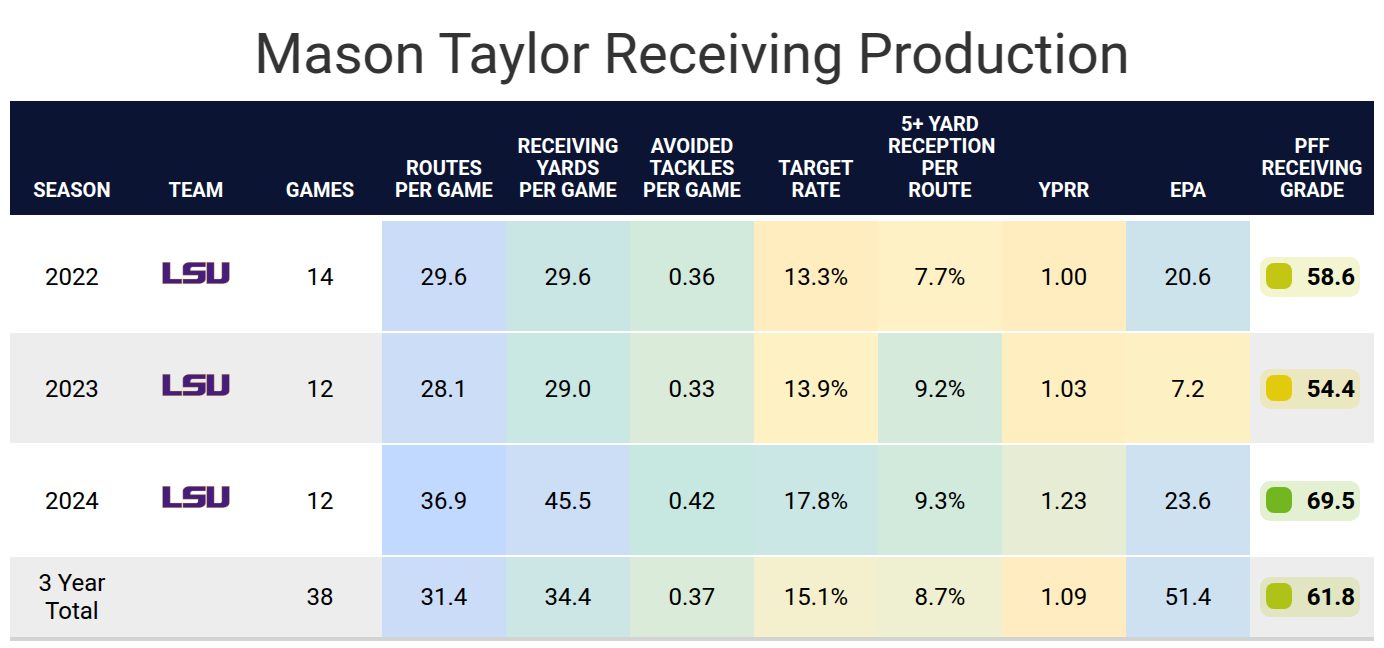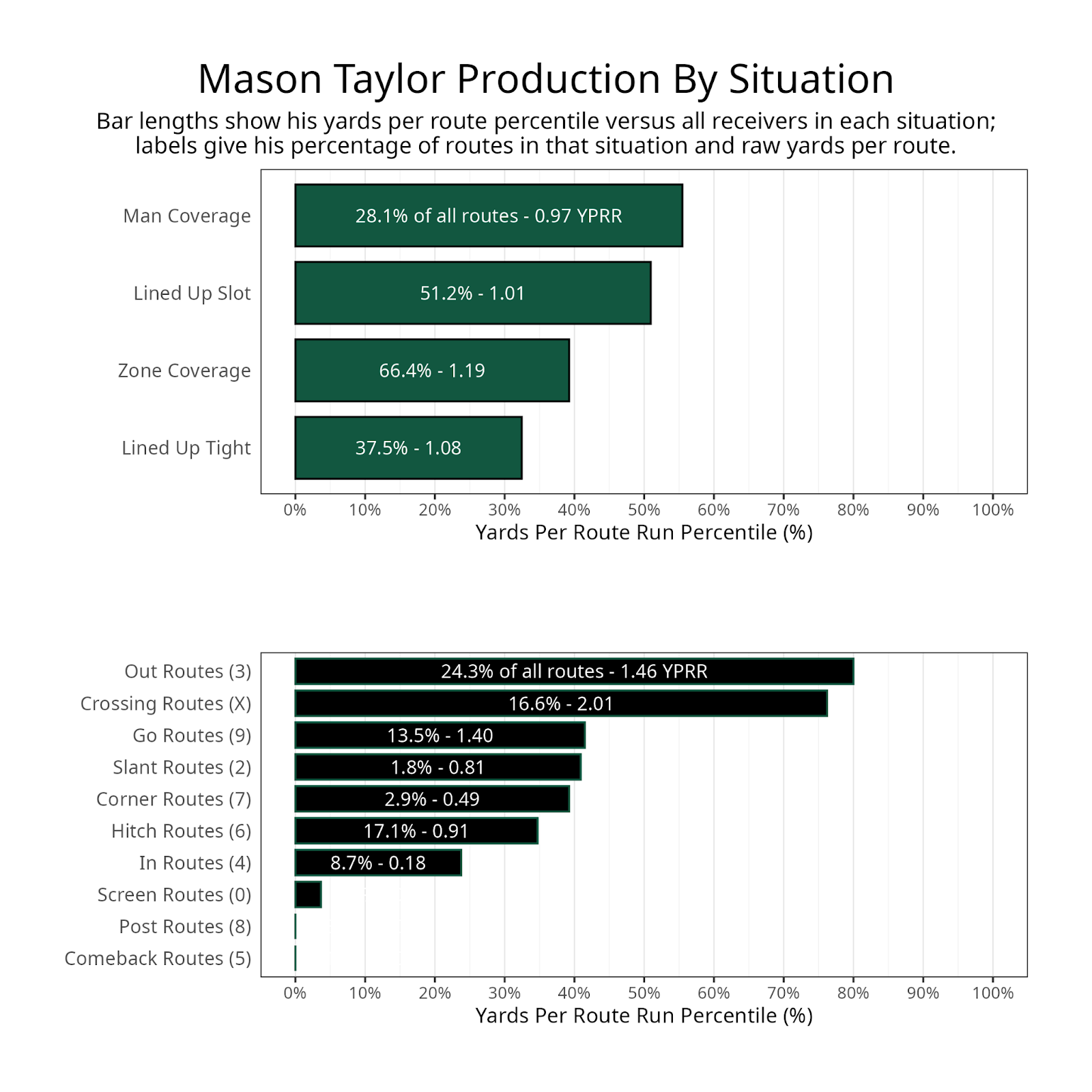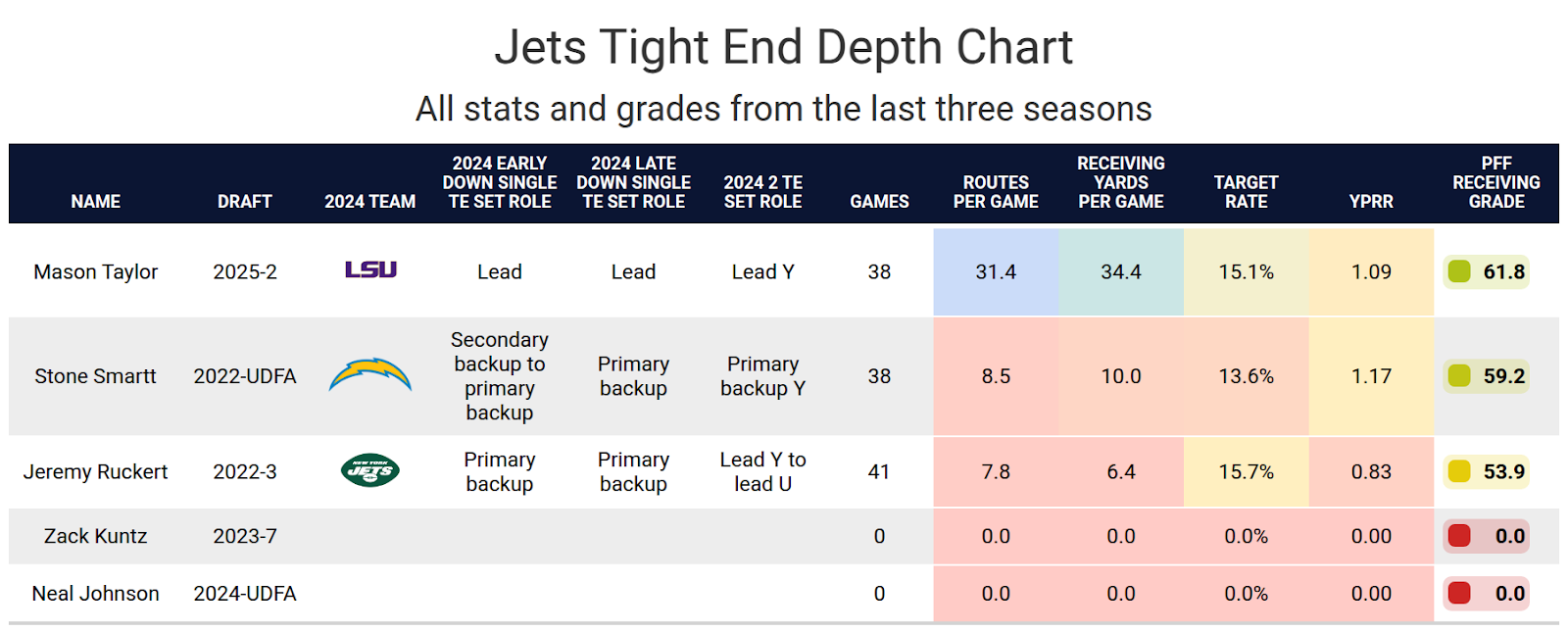
- Mason Taylor is among the most experienced tight ends in the class: Taylor has spent each of the last three seasons as LSU‘s full-time starting tight end.
- Taylor looks to follow in Brian Thomas Jr.’s footsteps: Thomas never graded particularly well at LSU before becoming an NFL star. Taylor looks to follow in the path of his former teammate.
- Subscribe to PFF+: Get access to player grades, PFF Premium Stats, fantasy football rankings, all of the PFF fantasy draft research tools and more!
Estimated Reading Time: 5 minutes
PFF’s Fantasy Football Player Profile series delivers the most in-depth fantasy football analysis available for the 2025 season.
Using PFF’s exclusive data, we evaluate player performance, competition for touches and how teammates and coaching staffs will impact each player’s fantasy football outlook.
Last updated: 7:15 a.m. Thursday, May 8
Click here for more draft tools:
NFL Draft Big Board | Mock Draft Simulator | NCAA Premium Stats
2025 PFF Draft Guide | Mock Draft Hub | Prospect Data Profiles
Draft Position Rankings
Player performance
Mason Taylor has spent the last three seasons as LSU’s lead tight end. His production hasn’t been nearly as high as other tight ends expected to be drafted on the first two days. Still, he’s also had significantly more competition for touches and a higher quality of opponent. In 2022 and 2023, he has to compete for targets with Brian Thomas Jr. and Malik Nabers. With those two out of the picture, he posted notably better numbers in 2024.
Part of Taylor’s production problem could have also been the quarterback. Taylor was targeted 11 times on deep passes in the regular season, the fourth-most for a Power-Four tight end last season. He caught three for 80 yards but only four of the 11 targets were deemed catchable. While he had Jayden Daniels earlier in his career, Garrett Nussmeier didn’t grade as well as a passer in 2024 as Daniels did in previous years. Taylor’s separation rate was in the 96th percentile among tight ends, suggesting the team may have been a more significant part of the problem.
Our draft guide mentioned multiple times that his strength is a problem, but that should be fixable. Taylor is a bit of a projection based on his limited college production, but that is one area that could change to help him become more productive in the NFL.


Projected role
Taylor joins the New York Jets, where he has an opportunity to start immediately. Tyler Conklin had been the Jets’ primary starting tight end each of the last three seasons, but he left for the Los Angeles Chargers in free agency. Jeremy Ruckert was drafted in 2022 but has primarily been used in a run-blocking capacity. He’s never caught a touchdown, his career high in receiving yards in a game is 37, and his 2024 season-high was 17 yards.
New York added Stone Smartt to a one-year, $1.35 million deal in free agency. The former undrafted rookie has shown a little more promise in the passing game, posting three games with at least 50 receiving yards in addition to one career touchdown. Ruckert and Smartt are two of the 15 tight ends with at least 500 snaps over the past three seasons and a sub-52.0 PFF offensive grade. None of the other 13 are expected to be starters this season, and most aren’t even expected to be the primary backups on their teams.
This means the lead tight end job is Taylor’s if he can earn it.


Impact of teammates
While the coach and quarterback situation isn’t ideal for Taylor, there are a few positives. The Jets added Tanner Engstrand as their offensive coordinator from the Detroit Lions. During his brief NFL career, he worked with both T.J. Hockenson and Sam LaPorta, who ended up being NFL stars. This is the first time he’s been in charge of an NFL offense, so we don’t know exactly what his offense will look like. However, his experience with the two elite tight ends certainly won’t hurt.
Taylor will be catching passes from new Jets quarterback Justin Fields, who scrambles a lot and takes a lot of sacks, which isn’t great for any receiver. He also likes to throw deep, which is fine because Taylor had a high average depth of target and deep target rate for a tight end last season. This could lead to a few big plays throughout the season, which would be ideal for Taylor’s fantasy value. Fields had a strong rapport with Cole Kmet when they were both with the Chicago Bears.


Bottom line
Taylor will be a sleeper option at tight end this season. There are 32 lead-receiving tight ends in the NFL, and a lot of them won’t be fantasy starters this year based on their history. Taylor is one of the few unknowns. He probably won’t see enough volume in the passing game to be a fantasy starter as a rookie, but in the right leagues, he’s worth a shot.
Footnotes
- Statistics in tables and charts were chosen based on their ability to predict future fantasy performance on a per-game or per-opportunity basis or to describe the player relative to others at the same position.
- “Opportunities” are defined as passing dropbacks, rushing attempts and routes run as a receiver.
- Numbers are provided either by season or based on the past three years. For rookies, only college statistics are included. For non-rookies, only NFL statistics are considered, regardless of whether they played in college within the previous three years.
- As college competition is easier than NFL competition, most rookies are likely to see a decline from their historical numbers.
- Only FBS data is considered for college players and comparisons.
- Kneel-downs are removed from rushing data to provide cleaner quarterback rushing rate statistics.
- The table colors in this article range from blue (indicating good/high) to red (indicating bad/low).
- All percentiles and color codings compare the given player to others with a high sample of opportunities. Generally, the cutoff is one-third of the possible opportunities in the sample. If a player does not meet the threshold, they are still included in the comparison, though their results may appear better or worse than expected due to the smaller, less predictive sample size.
- Information on utilization classifications and their importance can be found here for running backs, wide receivers and tight ends.
This news was originally published on this post .











Be the first to leave a comment